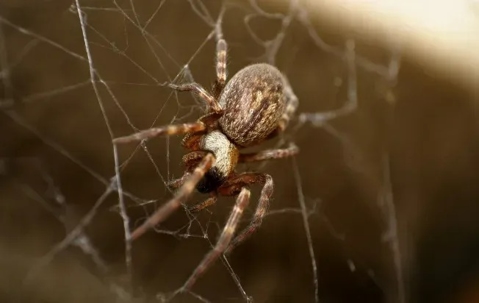Seeing a Hairless Spider? Here's What It Could Be
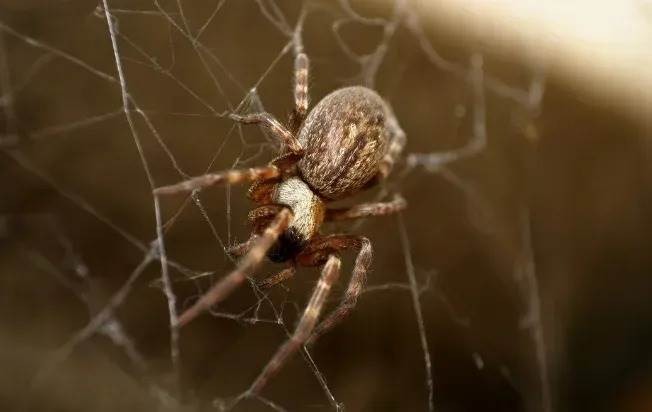
December 13, 2023
So-called hairless spiders are an intriguing variety of arachnids with a unique appearance and characteristics. These species are distinct from their hairier counterparts with their smooth, seemingly hairless exoskeletons, streamlined bodies, and glossy texture.
Though a spider may appear bare, it’s important to note that if you were to put any spider under a microscope, you'd find hair on its legs and body. But some species of spiders have hair that is invisible to the naked eye.
Visually hairless spiders exhibit a range of biodiversity, making up numerous species found in different habitats around the world. They play crucial roles in their environments, contributing to the delicate balance of ecosystems on both macro and micro scales.
Key Takeaways
- Visually hairless spiders are a variety of arachnids, known for their distinct appearance and characteristics.
- Numerous species of visually hairless spiders exist, each with unique biology and behaviors, inhabiting a range of environments.
- These spiders play important roles in ecosystems and in maintaining ecological balance.
Defining Hairless Spiders
Visually hairless spiders, part of the Arachnida class, are unique invertebrates that feature exoskeletons with hair that may appear invisible to the naked eye. As members of the vast arthropod phylum, they share similarities with other species within this category, but also exhibit some peculiar characteristics.
Like other spiders, visually hairless spiders have eight legs and usually eight eyes, though some species have only six eyes. Their legs and eyes provide expert movement and keen vision. This structure makes them highly adept at hunting prey and sensing their environment. Arachnida, which also includes scorpions, ticks, and mites, are known for their jointed appendages and a chitinous exoskeleton that protects their segmented body.
Predominantly nocturnal hunters, spiders rely on their well-developed sensory system to navigate and locate food, often using vibrations in their web or on the ground. Like their hairier counterparts wolf spiders, tarantulas, and jumping spiders, visually hairless spiders have a variety of specialized hairs on their bodies called trichobothria used for sensing and communication.
The unusual appearance of visually hairless spiders highlights the diverse range of creatures contained within the arthropod family. Studying them offers a glimpse into the adaptability of arthropod species and contributes to our understanding of invertebrates.
Common Types of Hairless Spiders
There are a few species of spiders in North America that lack the type of hair typically associated with arachnids:
Black Widow Spider
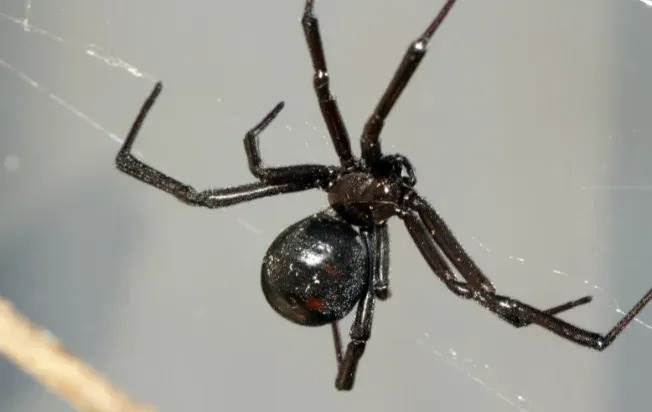
Adult female Latrodectus hesperus, or the black widow spider, is known for its hourglass-shaped red marking on its abdomen and its potentially harmful venom. While not completely hairless, it features limited body hair compared to other spider species. Their bodies are typically between 3 to 10 millimeters long and shiny black in color. Male black widows are brown or gray with spots of red and are considered harmless to humans.
Brown Recluse Spider
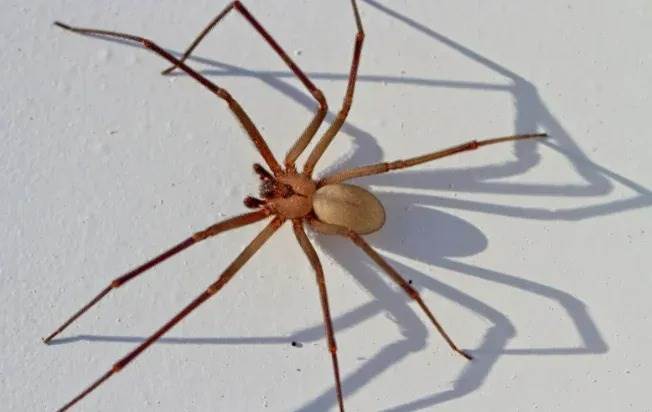
Noted for its violin-shaped marking on its back, the brown recluse (Loxosceles reclusais) is one of three North American spiders with toxic venom (the other two are the black widow spider and the Chilean recluse). Typically chocolate brown or tan in color, their bodies are between 6 and 20 millimeters long. While most spiders have eight eyes, brown recluse spiders have six eyes arranged in three pairs.
Common House Spider

Also called the American house spider, these species are visually hairless and can be found almost everywhere. Common house spiders can vary in color from tan to nearly black, often with differing shade patterns on their body. They are generally between 4 and 5 mm long. They only bite in self-defense, and the bites are typically harmless, leaving only a red welt.
Cellar Spider
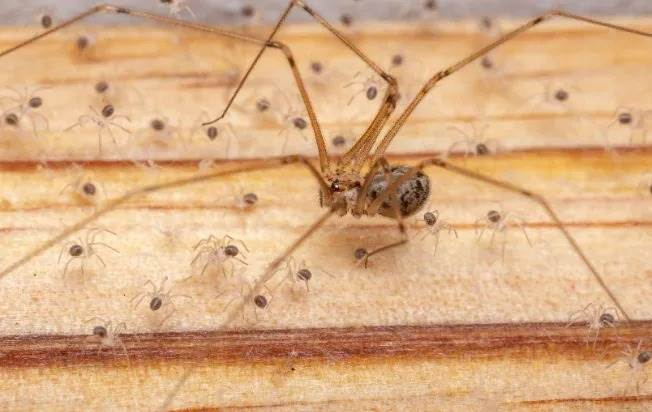
Cellar spider is the common name for Psilochorus simoni. This harmless species can feature either short or long body lengths and visibly hairless characteristics. Often colored gray, tan, or yellow, they are similar in appearance to daddy long-leg spiders.
Orb-Weaving Spider

The orb-weaver spider family, Araneidae, contains a large number of species of varying shapes, sizes, and colors. Some species may appear hairless to the naked eye. They are most recognizable by the appearance of their large webs.
Orb weavers are considered mostly harmless. They only bite when threatened and cornered, with venom that is comparable to that of a bee sting. Unless the bite victim is allergic to the venom, there are no long-term effects from the bites.
Here is a table comparing the key features of these visually hairless spider species:
Keep in mind, exercise caution when handling or observing any arachnid to avoid any potential harm to you or the spider itself.
Habitat and Lifestyle
Understanding the habitat and lifestyles of spiders can help us appreciate them better. Spiders tend to live in a variety of environments, ranging from indoors to outdoors. They are highly adaptable, making their homes in structures like walls and ceilings of houses, as well as in gardens and other green spaces.
Black Widow Spider
Black widows can be found throughout the United States, particularly in the South and West. They are usually found in sheds, garages, woodpiles, porch furniture, and other outdoor structures. They are often found near ground level and make irregular, tangled, and sticky webs.
Brown Recluse Spider
Like black widow spiders, brown recluse spiders build asymmetrical webs and are often found in places that are dry and undisturbed like sheds, woodpiles, and garages. Indoors, they are mainly found in basements, attic eaves, and cellars. Brown recluse spiders are native to the United States, and their range runs from Nebraska to Ohio and across the south from Texas to Florida.
Common House Spider
Common house spiders are synanthropic, which means they live near and benefit from humans. They are generally nocturnal and prefer to create one or more webs in high places used by flying insects. About 20 different types of these common spiders can be found throughout the United States and Canada.
Cellar Spider
Certain species of cellar spiders are often found in homes, especially in ceiling corners, basements, garages, and cellars, hence the common name. Outdoors, they usually live in rocky crevices, cave openings, and other protected places. Females construct unorganized, messy-looking cobwebs. About 20 different kinds of cellar spiders can be found throughout the United States and Canada.
Orb-Weaving Spider
Orb weavers are typically nocturnal and often build or rebuild their webs at night. They will consume their old web in the evening, rest for about an hour, and then spin a new web in or near the same location. This keeps the web free of debris. Their webs can measure up to three feet in diameter, with a circular grid pattern that resembles the kinds of webs seen in Halloween decorations. Orb weavers are found throughout most of the world, with about 180 species in North America.
Are Hairless Spiders Dangerous?
Most visually hairless spiders are harmless to humans. Though they may bite in self-defense, their bites are often less painful and lasting than bee stings. However, two species, the black widow and the brown recluse, are venomous spiders that can be potentially harmful to humans.
Bites from both species tend to be rare, as the spiders prefer to avoid human contact and will only bite in self-defense or when accidentally grabbed or handled.
Black Widow Spider Bites
Female black widow spiders have a potent venom that contains the neurotoxin latrotoxin, which causes the condition latrodectism. Symptoms can include pain, muscle rigidity, nausea, and sweating. But though they may have a fearsome reputation, the bites of black widow spiders rarely lead to death or serious medical complications.
Brown Recluse Spider Bites
Brown recluse spiders also contain venom, but they rarely cause death because of the small quantity of venom in a bite. The only reported exceptions have been in children. Common symptoms of brown recluse bites include pain or redness at the site of the bite, which also might form an ulcer, fever, nausea, chills, joint pain, and feelings of weakness. In very rare circumstances the bites can lead to seizures or coma.
Treating Spider Bites
If bitten, the best course of action is to see a doctor the same day. If a child has been bitten, bring them immediately to an emergency room, as they can be more seriously affected by the venom. If you can safely capture and bring the spider, it will help the doctor diagnose the condition.
Before the visit, clean the painful bite site with soap and water, apply ice to the bite area and elevate it above the level of the heart, and treat any pain with acetaminophen.
In severe cases, a doctor may prescribe anti-venom for black widow spider bites. No anti-venom currently exists for brown recluse spider bites. If severe symptoms occur or increase after a bite, always seek immediate medical attention.
Frequently Asked Questions
What type of spider lacks hair?
Every species of spider has hair, though some species have hair that isn’t visible to the naked eye. These include common house spiders, cellar spiders, orb-weaving spiders, as well as black widow and brown recluse spiders.
How to identify visually hairless spiders?
Key identification features of visually hairless spiders include a shiny, smooth exoskeleton, relatively small size, and the absence of conspicuous hair or bristles on their body and legs. Additionally, they may have distinctive eye patterns and shapes that distinguish them from other spiders.
Are visually hairless spiders dangerous?
Most species are not dangerous to humans. Even brown recluse and black widow spiders, whose venom can be harmful to humans, prefer to avoid human contact and will only bite in self-defense. As always, treat any spider with caution and avoid handling them.
What is the habitat of visually hairless spiders?
Visually hairless spiders can be found in various habitats, just like their hairy counterparts. They are generally more prevalent in humid environments, such as forests, caves, and damp basements. However, some species may also inhabit gardens, fields, or even desert regions.
Do visually hairless spiders bite?
Like all spiders, visually hairless spiders can bite when they feel threatened. However, the majority of bites from visually hairless spiders are mild and do not result in any severe symptoms. Some people might experience minor swelling, redness, or itchiness after being bitten, but these symptoms generally subside after a few days.
View All Blogs